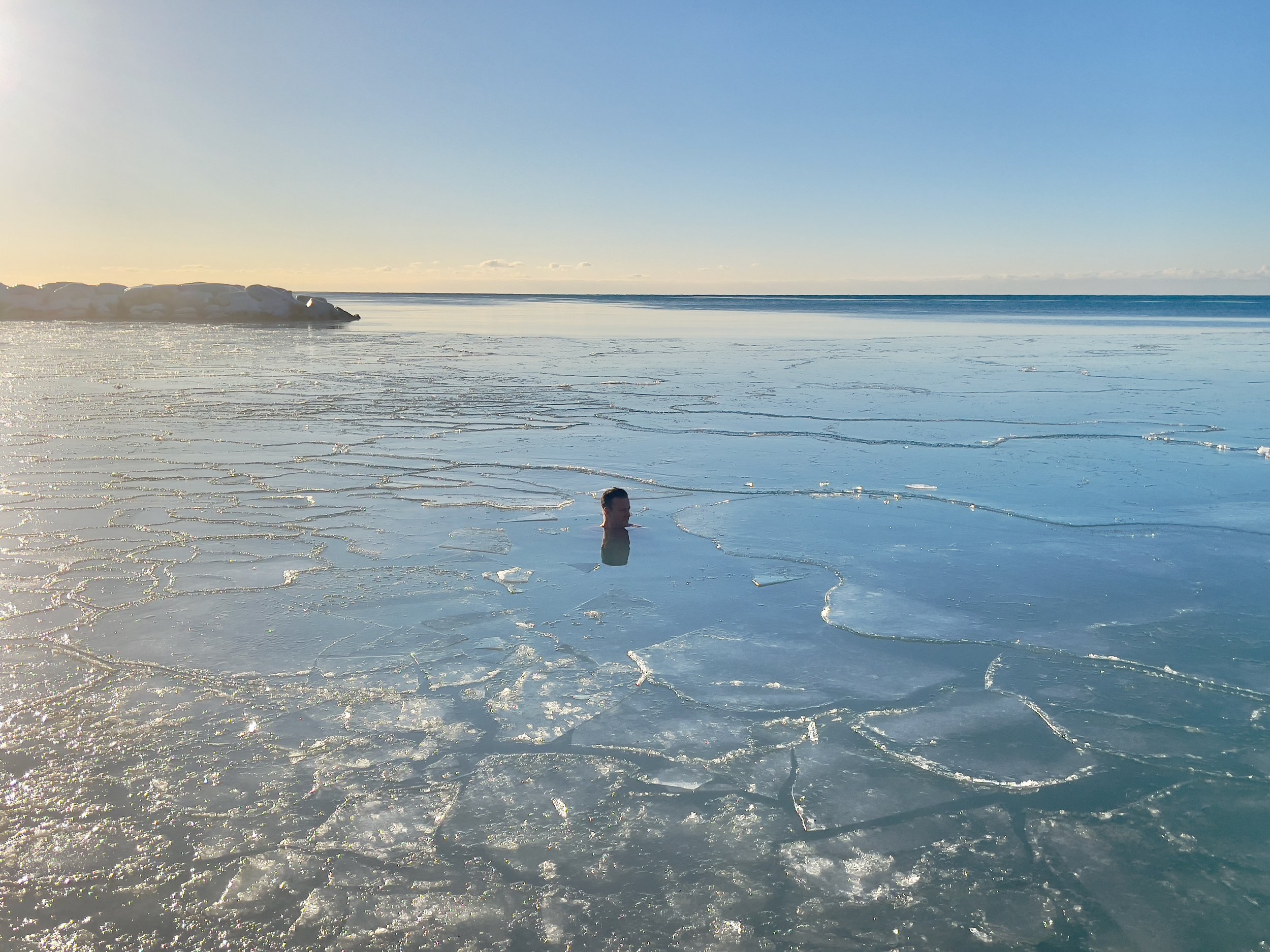Cold Exposure for Healthy High Performance: Pump the Parasympathetic Nervous System Brakes
In recent years, cold exposure has gained popularity as a powerful wellness practice with benefits that extend far beyond boosting resilience. Regular exposure to cold, whether through cold showers, ice baths, or winter swims, offers an impressive range of health benefits. Key to its positive effects is the activation of the parasympathetic nervous system, which promotes relaxation, mental clarity, and overall well-being. This article delves into the science behind cold exposure and its transformative effects on the body and mind.
Cold Exposure and the Parasympathetic Nervous System
Cold exposure initially activates the sympathetic nervous system, which is responsible for the body's fight-or-flight response. This explains the initial shock and rapid breathing experienced when stepping into cold water. However, with continued exposure, the parasympathetic nervous system—responsible for rest, digestion, and relaxation—begins to engage. This transition from sympathetic to parasympathetic activation helps to lower stress levels, calm the mind, and increase resilience.
One of the physiological responses to cold exposure is the release of cold shock proteins, which protect cells from stress and aid in recovery and repair. Cold exposure also promotes the production of norepinephrine, a neurotransmitter that enhances focus and mood, and improves attention and cognitive performance.
Benefits of Cold Exposure for Health
Cold exposure provides a range of health benefits, from enhanced mental clarity to physical resilience. Here are some key ways it can support wellness:
Improved Mental Focus and Calmness
When exposed to cold, the body releases norepinephrine, which has been shown to improve attention, focus, and mental clarity. Norepinephrine also plays a role in mood regulation and stress resilience, which can lead to enhanced productivity and well-being. Studies indicate that people who practice cold exposure regularly experience increased alertness and often report feeling more productive throughout the day.Enhanced Recovery and Reduced Inflammation
Cold exposure is commonly used by athletes for its ability to reduce muscle soreness and inflammation. Cold-water immersion has been shown to decrease exercise-induced inflammation, promoting faster recovery. By reducing the inflammatory response, cold exposure supports the body’s ability to heal, rebuild, and adapt to physical demands.Boosted Immune Function
Regular exposure to cold has been associated with improved immune function. Research shows that individuals who regularly engage in cold-water immersion or cold showers report fewer sick days compared to those who don’t. This is likely due to a temporary increase in the production of white blood cells and other immune-supportive compounds triggered by brief cold exposure.
You can read our research review here: https://pubmed.ncbi.nlm.nih.gov/24004719/.
Incorporating Cold Exposure into Your Routine
Starting with small steps can make cold exposure easier and more enjoyable. Here’s how to safely add cold therapy into your wellness routine:
Begin with Cold Showers
Start by adding 30 seconds of cold water at the end of your regular shower, gradually working up to a full minute or more. Over time, your tolerance will improve, making cold showers feel more invigorating than challenging.Try Cold-Water Immersion
For those seeking a more advanced approach, try cold-water immersion in a bathtub or natural body of water. Start with 5-10 minutes at a comfortable yet cold temperature, typically between 8°C to 10°C, and gradually extend the duration as your body adapts. You can explore colder temperatures over time. Never go into cold water alone - especially natural bodies of water like lakes, ponds or oceans.Alternate with Heat
If you’re comfortable with both cold and heat exposure, consider alternating between the two. Switching between hot and cold environments (like a sauna and cold plunge) provides an extra boost to circulation and promotes relaxation. This combination has been shown to improve overall cardiovascular health.
Conclusion: The Cold as a Pathway to Calm and Resilience
Cold exposure, when approached mindfully and safely, is an effective way to support health and wellness. By activating the parasympathetic nervous system, this practice can enhance our physical, mental, and emotional well-being. Start small, stay consistent, and leverage cold as a tool for long-term healthy high performance.
This article is based on my Powerhouse book. If you want to learn more about healthy peak performance you can order the book here.

